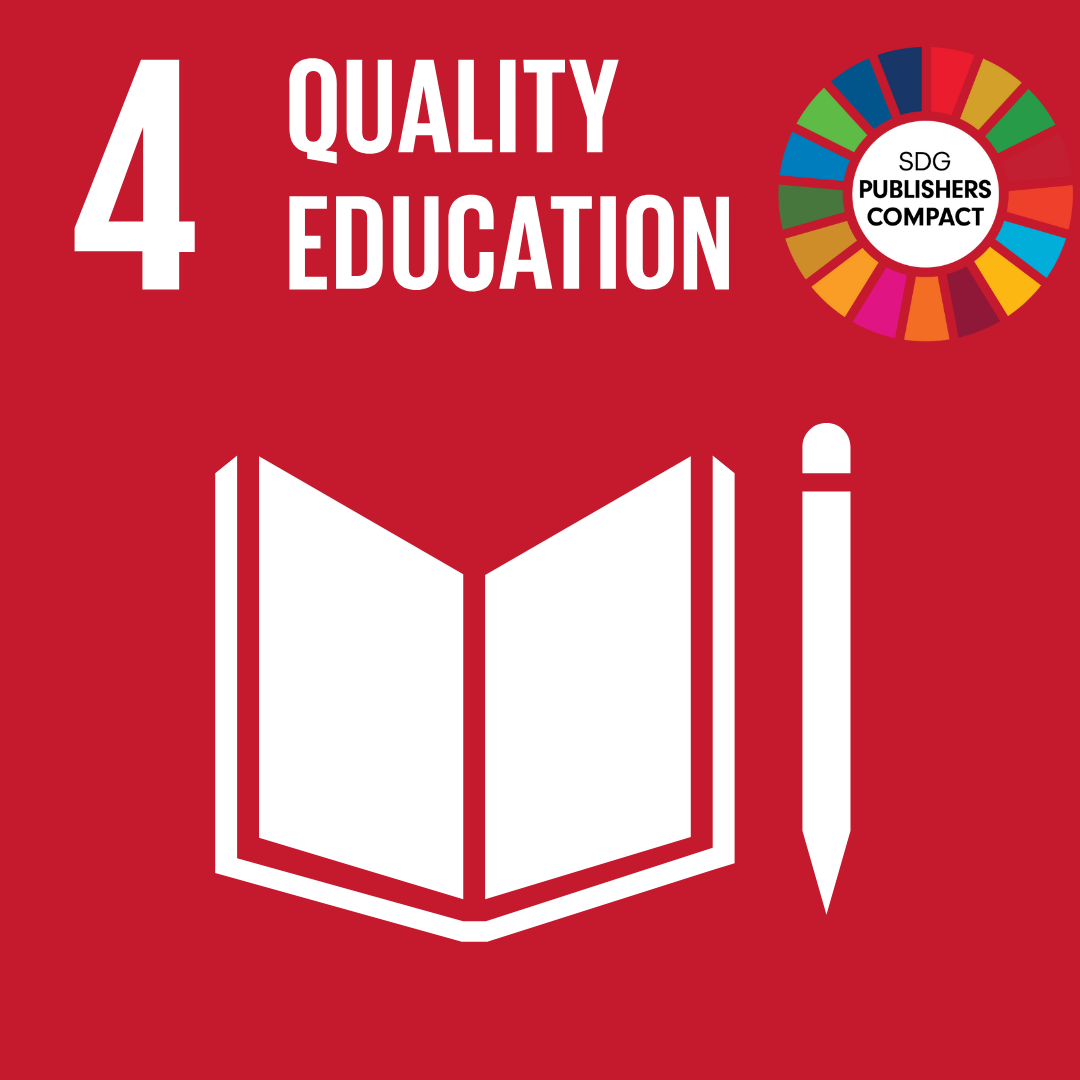Absorptive capacities in brazilian private higher education: a multi-case study of enrollment processes
DOI:
https://doi.org/10.37497/2965-7393.SDGs-Countries.v3.n00.43Palabras clave:
Absorptive Capacity, Higher Education Institutions (HEIs), Knowledge Management, Organizational Adaptability, Brazilian Education SystemResumen
Objective: This study investigates the absorptive capacities of Brazilian private higher education institutions (HEIs), particularly in their enrollment processes, to understand how these organizations develop and implement new knowledge.
Methods: Employing a multi-case study approach, the research analyzes 12 private Brazilian HEIs. It focuses on their methods of assimilating and utilizing new information and knowledge within their organizational structures.
Results: The findings reveal that many HEIs face challenges in disseminating new knowledge among employees. However, they adopt strategies like fostering transparent information flows, conducting employee training, and holding regular meetings to mitigate these issues.
Conclusions: The study concludes that the absorptive capacities of HEIs are crucial in adapting to the complexities of the market and achieving organizational success. The research highlights the importance of effective knowledge management practices in Brazilian HEIs and suggests that improving these capacities can significantly impact their operational effectiveness and adaptability.
Citas
Apriliyanti, I. D., & Alon, I. (2017). Bibliometric analysis of absorptive capacity. International Business Review, 26(5), 896-907.
Burawoy M., Burton, A., Ferguson, A. A., Fox, K. J. Gamson, J., Gartrell, N. Hurst, L, Kurzman, C. Salzinger, L, Schiffman, J., & Ui, S. (1991). Ethnography
unbound:power and resistance in the modern metropolis. Berkeley, CA: University of California Press.
Calderón, A. I. (2000). Universidades mercantis: a institucionalização do mercado universitário em questão. São Paulo em Perspectiva, 14(1), 61-72.
Ciotti, R., & Favretto, J. (2017). Capacidade absortiva em instituições de ensino superior: uma sistematização da literatura. Revista Contemporânea de Economia e Gestão, 15(3), 203-229.
Coimbra, A. (2004). A diferença está nos detalhes: marketing educacional. Brasília: New Date Agency.
Coghlan, D. (1993). A person-centred approach to dealing with resistance to change. Leadership and Organization Development Journal, 14(4), 10-14.
Cohen, W. M., & Levinthal, D. A. (1990). Absorptive capacity: a new perspective on learning and innovation. Administrative Science Quarterly, 35(1), 128-152.
Danneels, E. (2002). The dynamics of product innovation and firm competences. Strategic Management Journal, 23(12), 1095-1121.
Easterby-Smith, M., Graça, M., Antonacopoulou, E., & Ferdinand, J. (2008). Absorptive capacity: a process perspective. Management Learning, 39(5), 483-501.
Elias, S. (2009). Employees’ commitment in times of change: assessing the importance of attitudes towards organizational change. Journal of Management, 35(1), 37-55.
Gebauer, H., Worch, H., & Truffer, B. (2012). Absorptive capacity, learning processes and combinative capabilities as determinants of strategic innovation. European Management Journal, 30(1), 57-73.
Gibbs, G. (2007). Analyzing qualitative data. In Flick (Ed.), Londres: Sage.
Guedes, H., Ziviani, F., Paiva, R., Ferreira, M., & Herzog, M. (2017). Assessment of absorptive capacity: a study in Brazilian manufactures of solar panels. Gestão & Produção, 24(1), 50-63.
Goodman, R., & Yonezawa, A. (2007). Market competition, demographic change, and educational reform: the problems confronting Japan’s private universities in a period of contraction. Jürgen/Jongbloed Ben Enders (Hg.). Public-Private Dynamics in Higher Education. Bielefeld: transcript, 443-470.
Hernandez, J., & Caldas, M. (2001). Resistência a mudança: uma revisão crítica. Revista de Administração de Empresas, 41(2), 31-45.
Instituto Nacional de Estudos e Pesquisas Educacionais Anísio Teixeira. (2016). Censo da Educação Superior 2015. Brasília, DF, Brasil, Ministério da Educação.
Jansen, J. Van Den Bosch, F., & Volberda, H. (2005). Managing potential and realized absorptive capacity: How do organizational antecedents matter? Academy of Management Journal, 48(6), 999-1015.
Jick, T. (1979). Mixing qualitative and quantitative methods: triangulation in action. Administrative Science Quarterly, 24(4), 602–611.
Kotler, P. (2003). Marketing de A a Z: 80 conceitos que todo profissional precisa saber. Rio de Janeiro: Elsevier.
Kurtz, P., & Duncan, A. (1998). Shared service centres: overcoming resistance to implementation of a shared service centre. Management Accounting, Montvale, 76(7), 7-48.
Lane, P. J., Koka, B. R., & Pathak, S. (2006). The reification of absorptive capacity: a critical review and rejuvenation of the construct. Academy of Management Review, 31(4), 833-863.
Lichtenthaler, U., & Lichtenthaler, E. (2009). A capability-based framework for open innovation: complementing absorptive capacity. Journal of Management Studies, 46(8), 1315-1338.
Martinkenaite, I., & Breunig, K. J. (2016). The emergence of absorptive capacity through micro–macro level interactions. Journal of Business Research, 69(2), 700-708.
Miles M., & Huberman A. (1994). Qualitative Data Analysis. California: Sage.
Moré, R. Vargas, S., & Cembranel, P. (2012). Capacidade absortiva no contexto da inovação: um estudo bibliométrico. Revista de Gestão do Unilasalle, 3(1), 113-126.
Peccei, R., Giangreco, A., & Sebastiano, A. (2011). The role of organizational commitment in the analysis of resistance do change: co-predictor and moderator effects. Personnel Review, 40(2), 185-204.
Presse, P. (2014). Análise setorial da educação superior privada. Foz do Iguaçu, PR, Consultoria Hoper.
Ribeiro, T., Gonçalves, G., Costa, B., & Storopoli, J. (2017). Melhoria no processo de captação de alunos em uma instituição de ensino superior localizada no Nordeste. Anais do VI SINGEP - Simpósio Internacional de Gestão de Projetos, Inovação e Sustentabilidade e V ELBE - Encontro Luso Brasileiro de Estratégia, São Paulo, SP, Brasil.
Sampaio, H. (2013). Setor privado de ensino superior no Brasil: crescimento, mercado e Estado entre dois séculos (Relatório de pesquisa financiada pela FAPES na modalidade Projeto de Pesquisa Regular entre 01/04/2010 a 31/03/2012), São Paulo, SP, Brasil.
Sindicato das Mantenedoras de Ensino Superior - SEMESP. (2016). Mapa do ensino superior no Brasil 2016. São Paulo, SP, Brasil.
Souza, B., Arantes, J., & Dias, S. (2015). Captação de alunos. Revista de Ciências Gerenciais, 15(22), 87-105.
Strauss A., & Corbin J. (1990). Basics of qualitative research: grounded theory procedures and techniques. California: Sage.
Volberda, H. W., Foss, N. J., & Lyles, M. A. (2010). Absorbing the concept of absorptive capacity: how to realize its potential in the organization field. Organization Science, 21(4), 931-951.
Todorova, G., & Durisin, B. (2007). Absorptive capacity: Valuing a reconceptualization. Academy of Management Review, 32(3), 774-786.
Zahra, S., & George, G. (2002). Absorptive capacity: A review, reconceptualization, and extension. Academy of management review, 27(2), 185-203.














